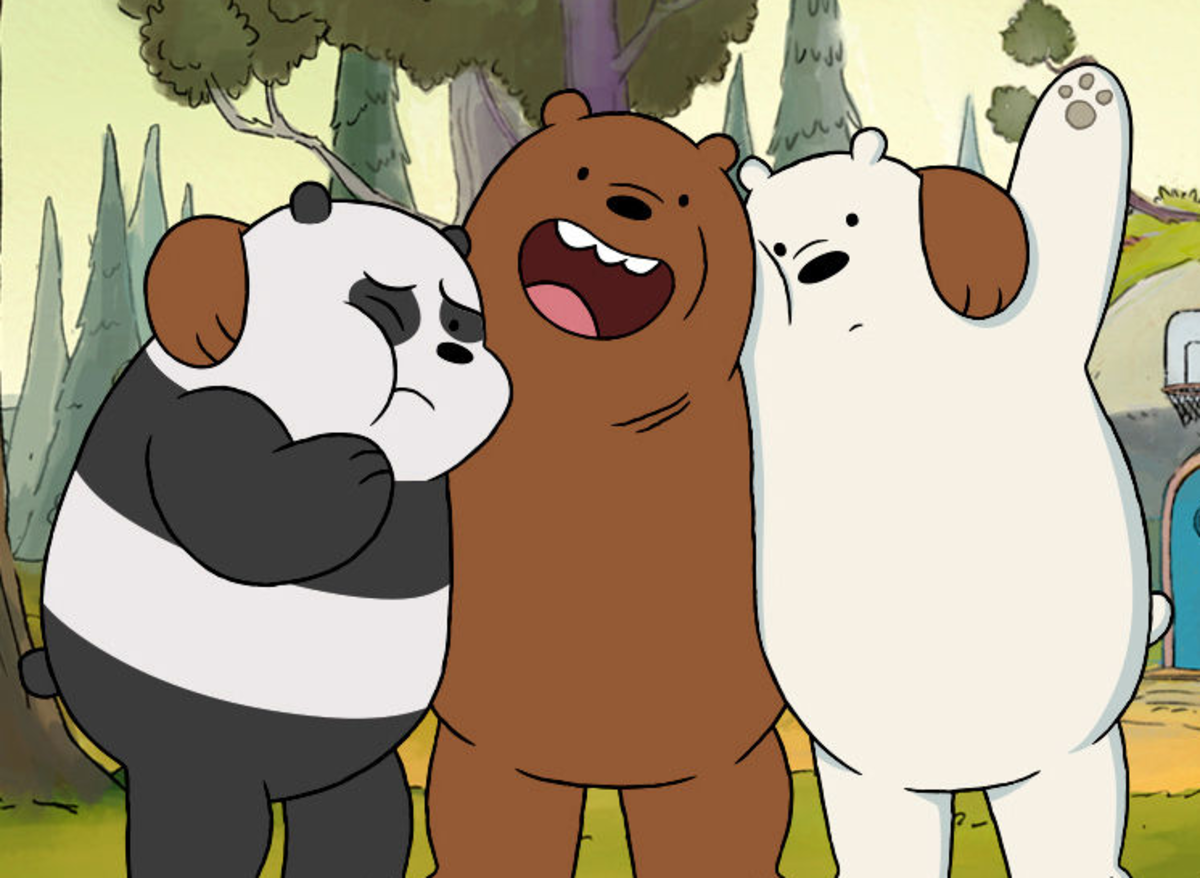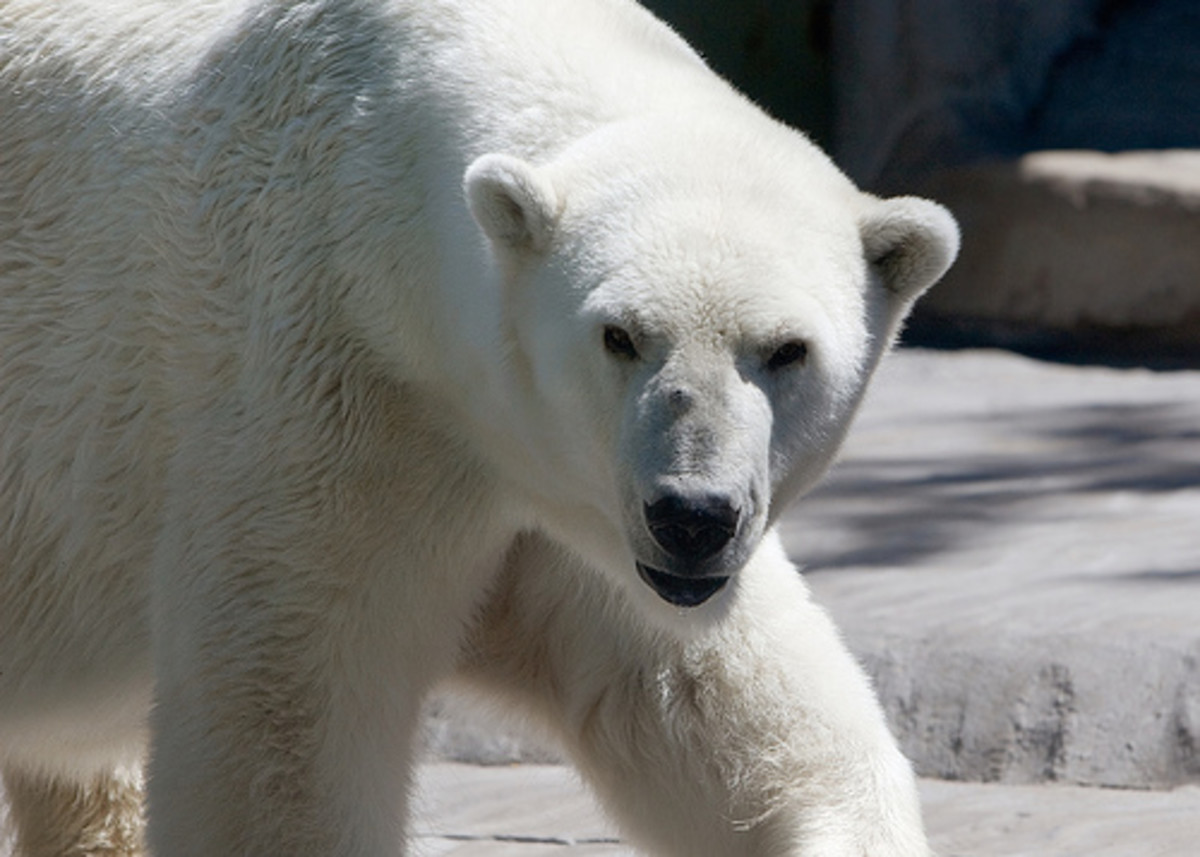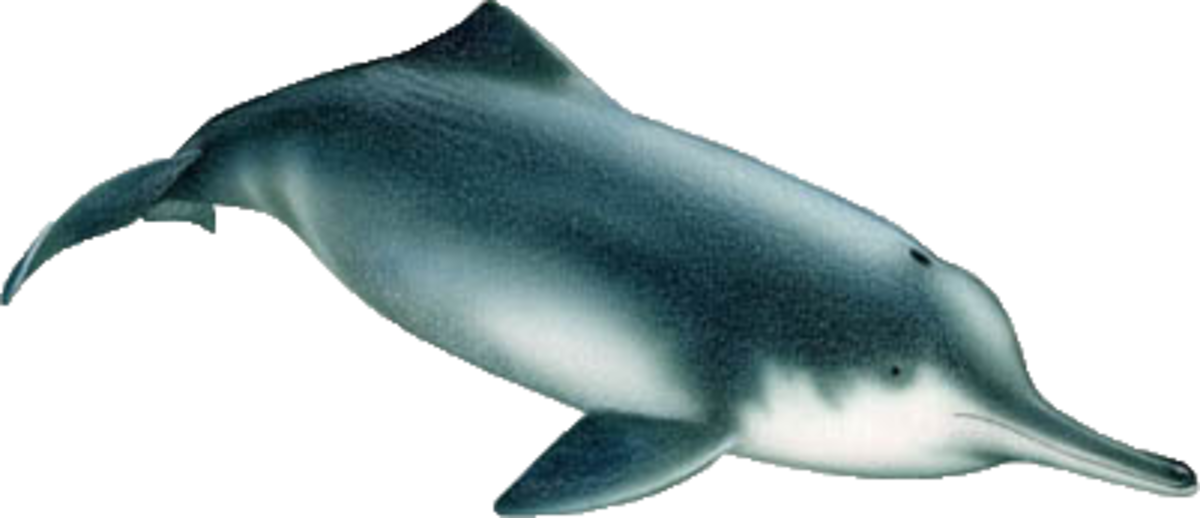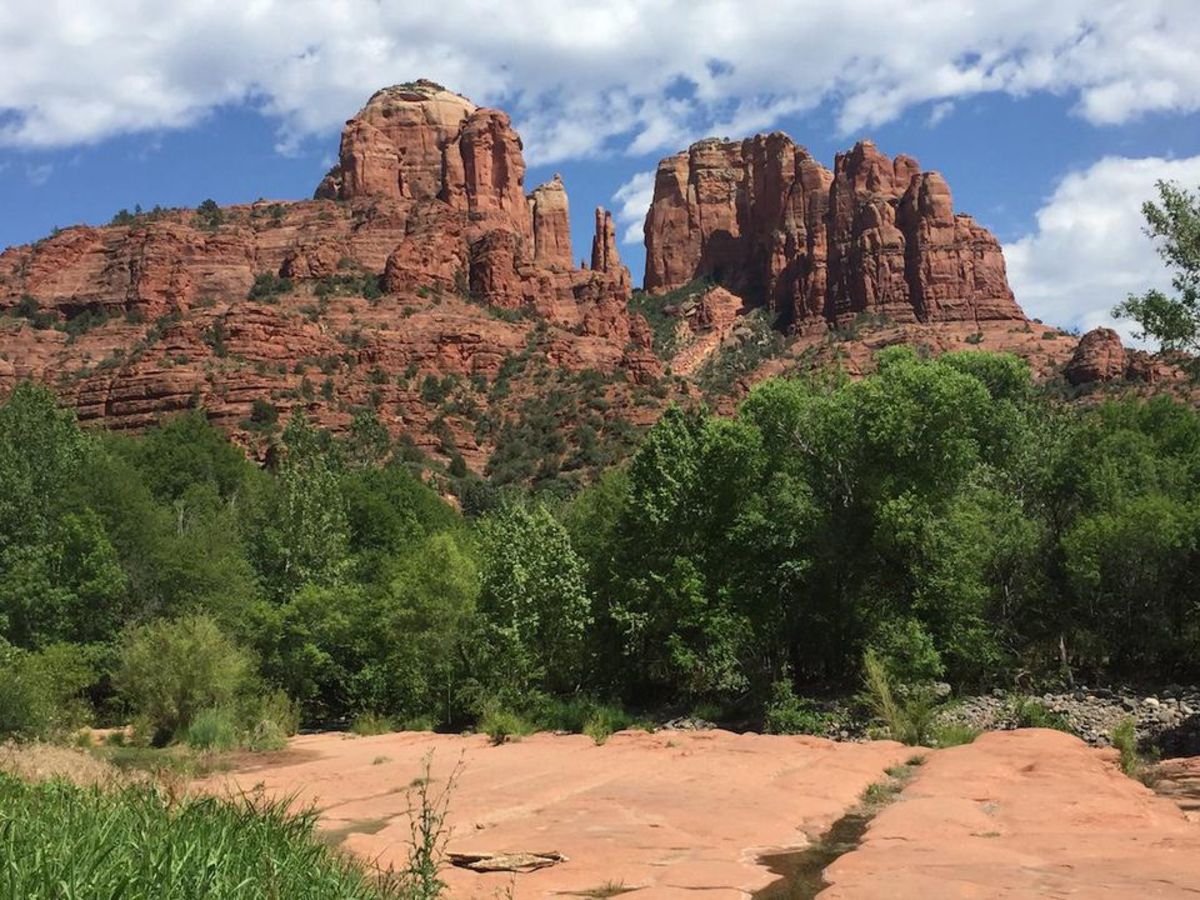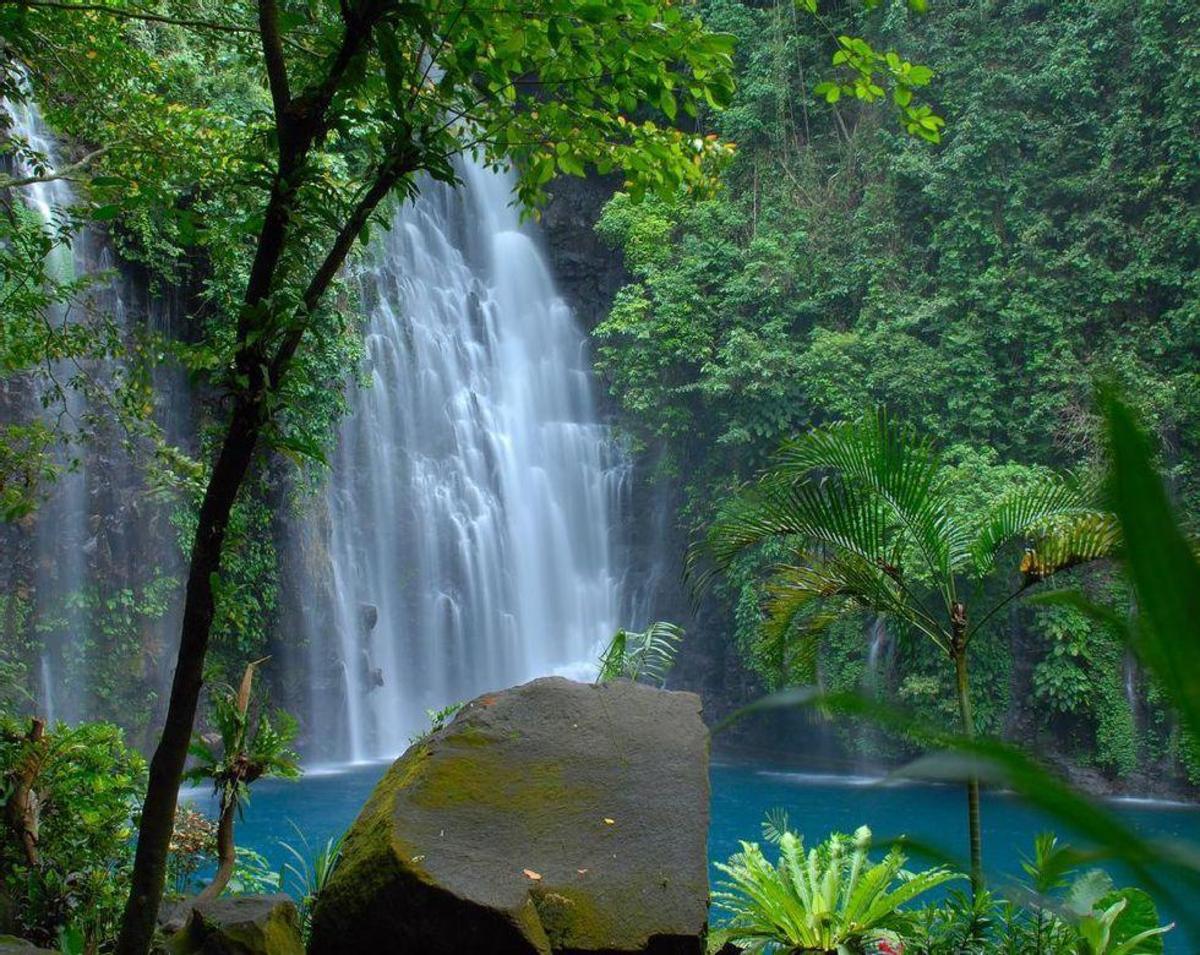- HubPages»
- Education and Science»
- Life Sciences»
- Endangered Species
Bear Encounters - Hitchhikers With Fur
Life has always held a lot of surprises for me. The day I found two hitchhikers with fur in the back of my truck, while amusing now -- certainly gave me a new found respect for the West Virginia rural life that my ancestors no doubt faced on a daily basis.
It was near dark when I became a little stunned after having been knocked to my knees while hauling groceries up the hill to our house. Seems I startled a young doe resting in the bushes right beside my truck. She'd bolted out of the brush and ran smack dab into me from behind. The contents of my grocery bags naturally rolled and scattered downhill, and I was quite some time in collecting everything.
It was only after I had the spilled groceries safely up to the house that I noticed it had become completely dark. Perhaps, those of you who have always lived in the city don't know true darkness. Let me tell you -- when you live on a cabin back in the woods, two miles from your nearest neighbors, without a full moon on a cloudy night -- you've never seen darkness. Such was this night.
There were more groceries out in the pickup. I was alone and going to be alone for several days unless I left the safety of that house and drove somewhere. I concluded that none of them were perishable and decided to call it a night, especially since my stomach was also calling for dinner.
Early the next morning I discovered that there was a leak underneath the kitchen sink and would need some plumbing supplies if I didn't want to be unable to do dishes or run water. Going out to our pickup truck, it was clear that I had forgotten to put the tailgate up and close the door to the cap cover on top of the bed. I quickly remedied that situation before I headed down that dirt road.
With each bump and up-and-downhill twist of that washboard of a road, I cursed my folly in not removing the remaining groceries -- it sounded like a lot of canned goods were rolling around the truck bed. Well, it was too difficult to turn around. Besides there really wasn't any place to do so for about forty-five minutes (the time it took to get to the nearest town that wasn't of a one stop light variety). I would put the groceries inside the front of the truck cab once I was done at the hardware store.
The hardware store was located in downtown Keyser, West Virginia, a somewhat empty part of town in the early mornings, unless you are in front of the local diner. That entire ride was one big annoyance with all the racket in the back of the pickup cap.
Still annoyed I stomped into the hardware store and waited in line for some time just to check out. Things move slow in West Virginia, it's not unusual to stand for what seems like forever while the clerk waits on a relative or friend, deep in personal conversation, ignoring all other customers -- especially "outsiders."
When I emerged from the hardware store, the sight was almost as shocking as getting knocked over by the doe the night before. There must have been fifty people all crowded around my pickup. Some of the more repeatable comments were:
"Hey lady! You've got a couple of little hitchhikers with fur in the back of your truck."
"You know it's illegal to have pet black bears?"
"Someone's already called the game warden."
Well, to make a long story short, it was determined by the game warden that I should quickly return home and leave the back of the pickup cap open so my traveling twin duo could climb out and find their mother before she found me. The game warden followed along behind me as I was "concerned" that she'd be waiting for me.
Indeed, she was in the parking area below our house and once the game warden assisted us both in reuniting the little family, I was left alone in the woods again. Now, this wasn't the only bear encounter that I've had -- but it is the one that made me the talk of town for quite some time.
Becoming An Expert On Appreciating Hitchhikers With Fur
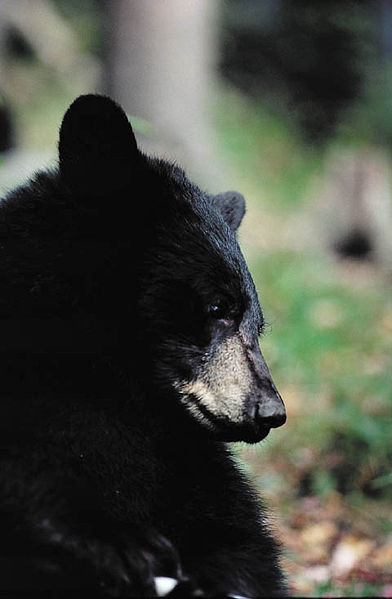
Clues Found In Their Diet
The bears and their smaller relatives belong to the order Carnivora,or flesh-eaters. That does not mean that they eat meat or fish exclusively. They do have the canine teeth which are characteristic of the members of this order, but their molars, or cheek teeth are quite different from the cutting teeth of cats.
The crowns of the molars are latter and broader than those of the cat family and thus they are more adaptable to the grinding of food. This would go to show that flesh does not make up the bears' entire menu.
Much of the bears' food consists of insects and vegetable matter such as roots, grass, and berries. These substances which have to be ground up rather than sheared off before they can be swallowed.
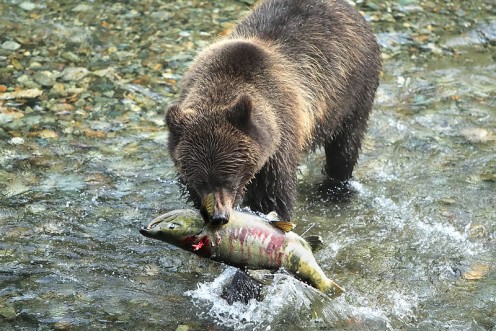
Kinship
On account of certain similarities in the skull, bears at one time were believed to be close relatives of the weasels. However, further research led scientists to believe that they are of closer kin to the dogs in the animal kingdom.
In Miocene times, an animal existed which showed both dog-like and bear-like characteristics. He is known as the Bear Dog or Hemicyon.
Bears are also known as plantigrade animals, which means that they place the entire sole of the hind foot on the ground when walking, the same as man does. Many animals, such as the dog, cat, and horse, are digitigrade, stepping only on their toes.
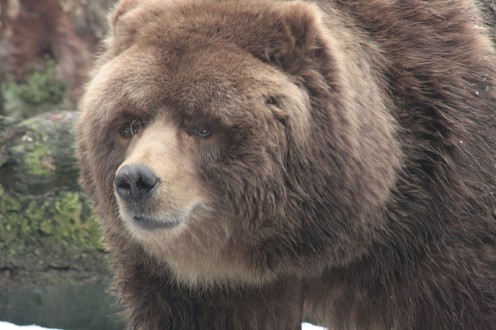
American Black Bear
Long after my little hitchhikers with fur happily went away with mama bear, I made it my business to know and appreciate my animal neighbors. The Black Bear is West Virginia's state animal.
There were occasions when we'd see them eating roots and berries. They paid little mind even to our dogs, although they gave them a wide berth when we were out walking them. Surprisingly, the dogs wisely left them alone. Other farm animals would occasionally look at them or keep glancing in their direction, but aside from that the bears and the farm animals paid little attention to each other.
We didn't have any problems with them after that comical and harrowing ride to the "big city." Although I never did forget to keep the pickup truck's cap closed and never left things that would attract bears to a food source. It helped a lot that we always promptly burned our trash.
In the very early spring female bears give birth in their winter dens. At birth, the young are very small. An American Black Bear cub will be about eight inches long and weigh only ten ounces, while the mother may weigh over two hundred times as much.
The cubs rapidly grow and are able to leave the den and follow their mother about when she emerges from her hibernation, at which time they are about three months old. When they exit the winter den, the mother black bear focuses on teaching her children which plants to eat, where to find grubs and other insects.
Bears generally have cubs every second year, the cubs running with the mother for two summers. Black bears have from one to five young. Usually two or three are born at birth.
Bears have poor sight and hearing, but a very keen sense of smell and they depend upon their noses, to a great extent, to find food and detect enemies. They are quite intelligent, shy, and secretive animals. The likelihood that you will see one in the wild is generally a rare occurrence.
The color of this bear is black, generally with brown around the nose. A number of color phases, that is, variations of the black bear, are quite well known. An example of this is found in Montana, Colorado, and Wyoming, where there is a brown phase which is known as the Cinnamon Bear (yet it is still considered a "black" bear).
The North American Black bear at one time ranged throughout most of North America, from the Arctic Circle to central Mexico. It has been exterminated now in many parts of the United States, but may still be found in extensively wooded regions in many of the Eastern states, and is still common throughout all the wooded districts of Canada and Alaska, along with the Rocky Mountains in the west.
It should be noted that wherever you find the American Black bear -- it is an inoffensive animal, feeding chiefly on roots, berries, fruits, nuts, ants, and other insects, along with carrion, fish, and flesh. They are exceedingly fond of acorns and beechnuts and at times will kill sheep, calves, and pigs if hungry enough. They are also fond of robbing bees' nests of their honey and grubs. In other words, for the most part they want to be left alone and will leave you alone.
Brown Bears
Found in North America and Eurasia, the Brown bear(aka Big Brown bear, Bruin, and Grizzley bear) are among the world's largest bears. Worldwide, there about two hundred different kinds of Brown bears. In many states here in America, they still have large populations with some exceptions in more populated states, such as California.
In coloring their fur varies in shades of brown, black, blonde and in combinations of those same colors. Their most longer fur is sometimes tipped with white or silver-gray.
Brown bears feed on berries, roots, grass, vegetation, mice, marmots, and other small animals. Fish are their main source of protein. They do occasionally kill larger animals and at times are destructive to livestock.
It should be noted that while you will see them in the daytime, they are primarily a nocturnal animal.
It is seldom that they will molest man unless provoked, and the stories of their attacks are undoubtedly not greatly exaggerated and mostly stem from the time when Grizzly bears (also a Brown bear) were widespread. A couple of people a year still die from Brown bear attacks in the United States.
Brown Bear Hunts For Wildlife
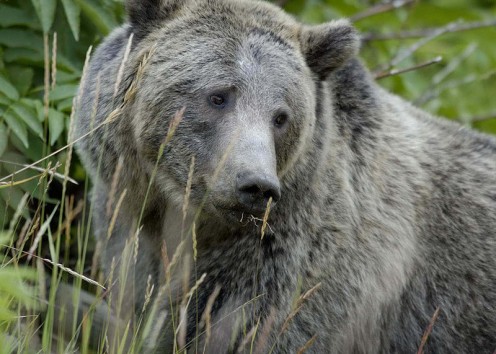
Grizzly Bears
Born and raised in the American west, the Grizzly Bear (The California Grizzly bear is the state animal), I was more than familiar with Grizzly bears, whose habits and lives were often discussed in school science classes. Our family had camped a lot, so knowing about this bear was just part of growing up.
Sadly today, it is extinct in California, but has been re-introduced to Yellowstone National Park, parts of Utah, and Montana. Efforts to re-introduce it to California have been resisted politically even though it is the state animal and a part of California's rich heritage and on the California state flag.
It has a more extensive range than Brown bears (particularly the Alaskan Brown Bear). They were originally found from northern Alaska south throughout the Rocky Mountains to central Mexico and east on the plains to Minnesota, Nebraska and Kansas. However, they've been long driven from most of their former territory.
In the United States, it's quite a rare animal, generally only seen in more remote mountainous districts. Perhaps it's only salvation from hunting and mankind has been our national park system. Yellowstone National Park (plus parts of Wyoming and Montana) is noted for its Grizzlies. It's one of the few places in the United States where you are likely to see a free grizzly bear.
The Grizzly is a smaller animal than other bear species. An average male would weigh about five hundred pounds and an exceedingly large one may weigh as high as seven hundred and fifty pounds. A measurement of eight feet for the length of the skin would be exceptionally large.
In color, the Grizzly varies greatly. In general it is a dark brown, the long hairs of the back being tipped with gray or white. Some Grizzlies are grayish yellow in color.
The Grizzly has the reputation of being a fierce and dangerous animal. Before the making of high-powered rifles he undoubtedly was a beast to be feared, but modern firearms have changed all this.
He prefers to go his own way, minding his own business, but a wounded bear or a mother defending her cubs is a dangerous antagonist. Usually two cubs are born to a Grizzly mother. Sometimes there are three at birth, and rarely four.
Young Grizzlies can climb trees, but as they grow older their ponderous weight and long claws hinder them, so that they are no longer as able to climb. Yet, they can run with surprising speed when necessary.
As a rule they are shy, much preferring to beat a hasty retreat, but they will often allow a close approach as long as the wind is blowing from them to you -- for like all bears, they depend upon their noses to tell of danger.
It is never safe to prophesy just what a Grizzly bear will do, and never safe to take too much for granted.
The Grizzly bear feeds on a great variety of food. They eat quantities of grass and roots, and berries whey they are in season. They turn over stones and demolish rotten logs for ants and other insects. They are very fond of the ground squirrels and marmots which are common over much of their remaining range and they will spend hours digging them out of their burrows.
They will also feed on larger animals and occasionally a Grizzly will kill livestock. They will also eat carrion (the bodies of animals which have died).
Grizzly bears are an endangered species in some of the lower forty-eight states and extinct in many of them. Grizzly bears are a species of Brown bears.
California Grizzly Bear - Now Extinct In This State
If You'd Like To Know More Abut Bears!
- Grizzly Bear
Grizzly Bear or grizzlies are a subspecies of the brown bear living in North America. Cubs, facts, pictures with unique grizzly bears attack photos. - Grizzly Bear - Defenders of Wildlife
Fact sheet about grizzly bears, which are also known as brown bears. - Grizzly Bear - National Wildlife Federation
The grizzly is a symbol of the American wilderness but now it is threatened in the lower 48 states. - WV Black Bears - Jim Blackwood Photographer
WVBlackbears.com is a nature photography website by Jim Blackwood, featuring the West Virginia black bear.

